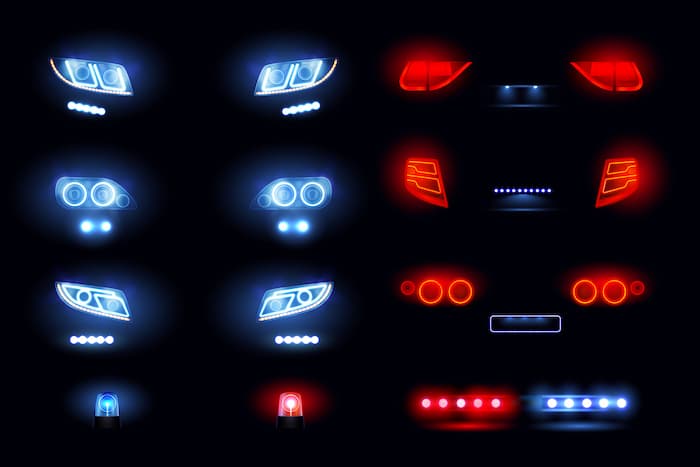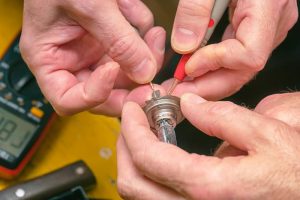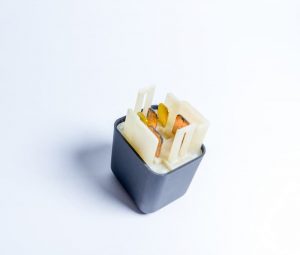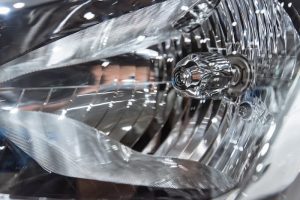Visualization is an important part of driving at night, and car lights are what makes it possible to see the road ahead. To ensure you enjoy the full features of your car then, you must consider the various car light types on your car including the car dashboard lights and their various functions in your vehicle. While your car lights serve a variety of purposes, each one must be working perfectly in order for the vehicle to be considered roadworthy. Aside from visibility, there are also important indicators, especially those at the rear, and they contribute to the safety of other road users.
Car lighting system and how to use them

- Headlights:
The most well-known and equally critical part of the car lighting system is the headlight. They usually come in pairs and are located in the car’s frontal area, but some vehicle models may have four of them and are used for cosmetic purposes or as a brand signature. The headlights are essential for illumination, particularly in low-light situations, as they enable the driver to see the road ahead.
Low beam and high beam lights are the two styles of car headlights. The low beam lights have adequate lateral and forward illumination. High beam lights, on the other hand, provide focused light delivery with no glare control and are suitable for roads with no visible traffic. While headlights are to be used in accordance with each state laws, they can also serve as a means of communication. For example, the 1,2,3 headlight flashes you see other drivers perform on the road.
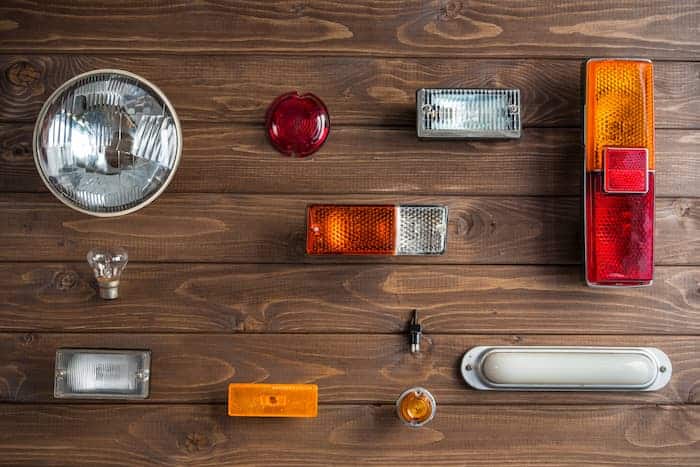
- Taillights:
Tail lights, as their name suggests, are mounted at the rear of the vehicle and emit a red light. They work in combination with the headlight, so they are turned on when the headlight is turned on. Their primary role is to warn drivers that there is a vehicle ahead of them and how far away it is.
- Fog lights:
Fog lights aid visibility in foggy weather. This form of light is located underneath the headlights and emits a wide beam of light with a sharp cutoff that prevents the light from refracting off the fog and glaring back at the driver. They come into play when the headlights aren’t working as well as they should, particularly when there’s a lot of fog.
- Daytime running lamp:
The daytime running lights are located in the front and rear of the vehicle, and they switch on automatically when the vehicle is in drive or the handbrake is depressed. Though they can be distracting, their main function is to make other road users see the car. It is possible to switch them off in certain car models.
- Signal lights:
Signal lights are important in driving and can be turned on or off using blinkers or turn signals. They are situated to the side of the headlights and tail lights on both the front and rear of the vehicle. These lights are switched on to warn other drivers that you are making a turn and to show the direction you are heading. When driving, they play an important role in interacting with other drivers.
- Brake lights:
The brake lights are located to the side of the taillights on the back of the vehicle. They turn on when you apply the brake, as their name suggests, and they warn other drivers that you are slowing down. Although they are unlikely to be misused, they should be adequately maintained to avoid burnout.
- Hazard lights:
In the event of a breakdown, the hazard lights are blinking lights in the front and rear of the vehicle that you must manually turn on. You click the hazard button on your dashboard to warn other drivers that your car is not in good driving condition, such as if your alternator is broken.
- Parking lights:
The car also has parking lights on the front and back. They have a white or amber appearance on the front and a red appearance on the back. You can see them for 500 feet and use them while parking. Driving with the parking lights on is illegal in most jurisdictions.
- Interior lights:
Interior lights are those that illuminate the interior of a vehicle. They should not be used for long periods of time, particularly when driving, as they can impair your judgment.
With technological innovation remaining at the forefront of the automotive industry, car lighting system has long been improved to include automatic features. The essence of the automatic feature is to give drivers more time to concentrate on the road while the vehicle handles the lights. To find out more, check out our previous article on how automatic headlights work.
Types of Car lighting bulbs
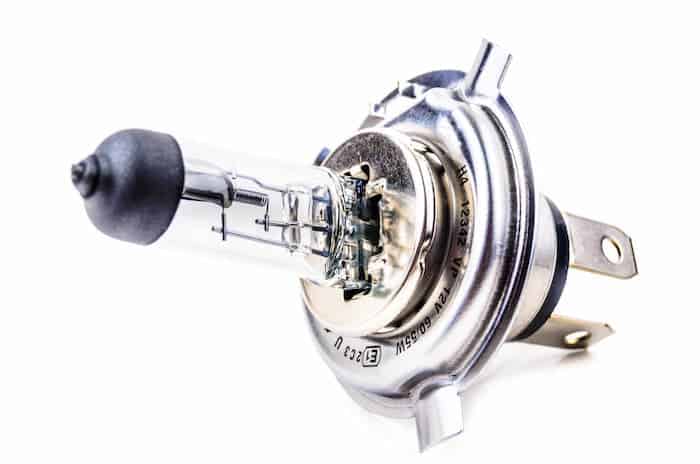
Every light in a car is provided by bulbs which come in a variety of shapes and sizes. While the number of lumen in a headlight bulb would determine how bright the bulb illuminates, the most popular bulbs in the market remain LED, halogen, and xenon lights. Let’s take a look at these different styles;
- LED lights:
Modern cars, as well as those with aftermarket tuning, come fitted with LED lights as standard. The primary purpose of LED lights is cosmetic, particularly in the headlight area, where they give the car’s front end a more angular appearance. They are not only energy rich, but they are also less prone to overheating. As a result, they are long-lasting and simple to maintain.
To make the car stand out, some care will have these styles of car lights on the body or even the wheels.
Halogen lights:
Many automobiles’ standard lights are halogen lights, which use a mixture of gases like nitrogen and argon inside a tube with tungsten filament that heats up to create light. They are inexpensive and simple to maintain, but they do have a tendency to overheat.
- Xenon:
High-intensity discharge (HID) lamps are also used to power the xenon lights. They act in a similar way to halogen lights in that they generate light by heating gases and metals. The only difference is that they light up with rare metals.
As compared to halogen lights with the same wattage, they emit a lot of light. Owing to the high cost of rare metals and their uncontrollable glare, they are not widely used.
Conclusion
Both the driver and other road users depend on the car lighting system. As a mechanic or a car owner, you should be familiar with the various types of car lighting. One thing you have to keep in mind is that the lights are of various colors. The frontal lights, for example, are clear to illuminate the road ahead, while the rear lights are red to serve as a warning.
When the car is parked, the lights should not be turned on because this can lead to a dead battery. Also, know how to clean your car’s headlights using a restoration kit and other lights, which is an important part of keeping them in good working order.

